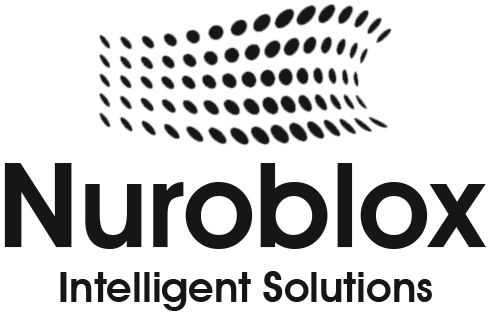AI Automation with Data Privacy: All You Need to Know
AI automation is transforming the way businesses operate accelerating workflows, enhancing decision-making, and delivering cost-efficiency at scale. From intelligent document processing to predictive analytics and autonomous agents, AI-powered systems are now deeply embedded in critical operations across industries.
But with this rapid adoption comes a growing concern: data privacy.
AI systems often rely on vast amounts of personal and sensitive information customer details, financial records, health data, and behavioral patterns. As automation becomes more sophisticated, so do the risks of data misuse, breaches, and regulatory violations. For organizations, the challenge is no longer just about adopting AI, but doing so responsibly and compliantly.
This blog examines the intersection of AI automation and data privacy, unpacking the key risks, regulatory frameworks, and best practices for developing privacy-first automation workflows. Whether you’re a tech leader, compliance officer, or innovation strategist, here’s what you need to know to ensure your AI initiatives are both efficient and ethical.
The Rising Importance of Data Privacy
As organizations increasingly rely on AI automation to streamline operations, the volume of data flowing through systems has grown exponentially. This data isn’t just numbers and logs it often includes sensitive personal information like names, addresses, financial details, health records, biometric data, and behavioral patterns. When this data fuels automated decisions, recommendations, or customer interactions, privacy becomes a mission-critical concern.
1. Public Trust Is on the Line- Modern consumers are more privacy-aware than ever. A single data mishandling incident can lead to severe reputational damage, loss of customer trust, and brand backlash. Privacy is no longer a compliance checkbox it’s a strategic advantage in building loyal customer relationships.
2. Privacy Risks Are Growing with AI Complexity- AI systems don’t just store and process data they learn from it. As models become more complex, they may unintentionally memorize sensitive information or make inferences that expose private details. For instance, language models trained on user data might generate outputs that reveal confidential content, while automated profiling can lead to unintended discrimination.
3. Global Regulations Are Getting Stricter- Governments worldwide are strengthening data privacy laws to keep pace with technological advancement. Regulations like the EU’s GDPR, California’s CCPA/CPRA, India’s DPDP Act, and China’s PIPL are setting higher standards for how data is collected, used, and stored, especially in automated and AI-driven environments. Non-compliance can result in multi-million-dollar fines, litigation, and operational disruption.
4. Data Privacy Is a Business Enabler, Not a Barrier- Forward-thinking enterprises are recognizing that robust privacy practices can actually accelerate AI adoption. By embedding privacy into design, organizations gain the confidence to scale automation safely, while also meeting stakeholder expectations and reducing risk exposure.
As AI automation becomes central to digital transformation, data privacy must move from the sidelines to the core of your AI strategy. It’s not just about staying compliant; it’s about building ethical, transparent, and future-ready systems.
Privacy Risks in AI Automation

While AI automation can unlock massive efficiency gains, it also introduces unique and often overlooked privacy risks. Unlike traditional systems, AI models interact with data in ways that are probabilistic, opaque, and sometimes unpredictable, making it harder to control or trace how personal information is used. Below are the key privacy risks you should be aware of:
1. Unintended Data Exposure
AI models often require large datasets to train and improve. If these datasets contain personally identifiable information (PII) and are not properly anonymized, there is a real risk of exposing sensitive data either during training or when the model generates outputs.
Example: A customer support chatbot trained on past ticket data might inadvertently expose customer names, account numbers, or medical conditions in its responses.
2. Inference and Re-identification Risks
AI systems can infer sensitive attributes such as gender, ethnicity, or health status even when that information wasn’t explicitly provided. In some cases, users can even be re-identified from supposedly anonymized data by cross-referencing multiple data points.
Risk: The illusion of anonymity can lead to false security, resulting in privacy violations and non-compliance with laws like GDPR.
3. Shadow Data and Data Drift
AI automation often operates across multiple systems and APIs, creating unmonitored data trails also known as shadow data. Over time, datasets evolve or “drift,” potentially bringing in sensitive information that wasn’t originally part of the system’s scope.
Impact: Shadow data increases the attack surface for breaches and complicates compliance audits.
4. Bias, Discrimination, and Ethical Violations
When AI is trained on biased or unbalanced data, it can produce unfair outcomes particularly in hiring, lending, or healthcare automation. Even if the data is lawful, the outcomes may violate anti-discrimination laws or ethical norms.
Example: Automated hiring tools that give lower scores to resumes with certain names or demographics may lead to discriminatory practices often unintentionally.
5. Third-Party and API Vulnerabilities
AI automation frequently integrates with third-party services for data enrichment, analytics, or deployment. These integrations can introduce weak points where sensitive data is transferred, stored, or processed without adequate protection or oversight.
Concern: Privacy controls must extend beyond your system to include every partner or vendor involved in the AI lifecycle.
6. Lack of Transparency and Accountability
AI’s “black box” nature makes it hard to explain or trace how a decision was made. Without clear documentation and explainability mechanisms, it’s nearly impossible to prove that personal data wasn’t misused.
Consequence: This lack of transparency can trigger regulatory violations and erode public trust.
AI automation is only as safe as the data practices behind it. Organizations must proactively identify and mitigate privacy risks throughout the AI lifecycle from data collection and model training to deployment and decision-making. Ignoring these risks can lead to significant financial, legal, and reputational damage.
Building Privacy-First AI Automation
To truly unlock the potential of AI automation while maintaining trust and compliance, organizations must embed privacy into the core design of their AI systems not treat it as an afterthought. A privacy-first approach ensures that sensitive data is protected throughout the AI lifecycle from data ingestion and model training to deployment and continuous learning.
Here’s how to build AI automation with privacy at the forefront:
1. Adopt Privacy-by-Design Principles
Privacy should be a foundational element in your AI systems. This means integrating safeguards and controls at every stage of development, including:
- Data collection: Only gather what’s necessary (data minimization).
- Purpose limitation: Use data strictly for the intended, consented purpose.
- Built-in protection: Apply encryption, masking, or tokenization from the start.
Tip: Align your teams around the “privacy by default” mindset not just as a legal requirement, but as a standard of ethical AI.
2. Anonymize and Pseudonymize Sensitive Data
Before using data for AI training or automation workflows, remove or obscure personal identifiers wherever possible:
- Anonymization ensures data cannot be traced back to individuals.
- Pseudonymization replaces direct identifiers with reversible placeholders (with added access controls).
This reduces the impact of data exposure and often helps with regulatory compliance.
3. Use Differential Privacy Techniques
Differential privacy adds statistical “noise” to data or AI model outputs, making it extremely difficult to trace results back to an individual. This technique allows businesses to gain insights from data without compromising individual privacy.
Used by companies like Apple and Google, differential privacy is becoming a gold standard in privacy-preserving AI.
4. Explore Federated Learning
Instead of centralizing sensitive data in one place, federated learning trains AI models directly on decentralized devices (e.g., mobile phones, edge nodes) and only shares model updates—not raw data.
This approach drastically reduces data exposure and is especially useful in industries like healthcare, finance, and telecom.
5. Implement Role-Based Access and Audit Controls
Not every user or system should have the same level of access to data. Role-based access control (RBAC) ensures that only authorized personnel can access sensitive inputs, outputs, or configurations. Combine this with:
- Detailed audit logs
- Real-time access monitoring
- Alerts for abnormal behavior or data access
6. Embed Consent and User Control Mechanisms
Where applicable, give users visibility and control over how their data is used. This includes:
- Clear opt-in/opt-out choices
- Transparent usage policies
- Mechanisms for data deletion or export upon request
Empowering users enhances trust and aligns with global privacy laws like GDPR and CPRA.
7. Continuously Monitor and Update Models
Privacy threats aren’t static. Regularly monitor your AI systems for:
- Data drift (changes in data behavior over time)
- Model inversion risks (leakage of training data)
- New privacy vulnerabilities
Set up privacy reviews as part of your AI governance process, especially when models are updated or retrained.
Building privacy-first AI automation is not just about compliance it’s about creating systems that are resilient, trustworthy, and future-ready. Organizations that invest in privacy-centric AI design today will be better positioned to innovate responsibly and sustainably in the years ahead.
Best Practices for Implementing Privacy-First AI Workflows
Designing AI automation with privacy at the forefront is not a one-time effort it’s an ongoing commitment that must be embedded into your workflows, teams, and systems. The following best practices help ensure that your AI initiatives are not only powerful and scalable but also secure, compliant, and trustworthy.
1. Identify and Classify Sensitive Data Early
Before building any AI automation, conduct a thorough data discovery and classification exercise. Understand:
- What types of data are involved (PII, financial, health, behavioral, etc.)
- Where the data resides
- How it flows between systems and processes
Use data mapping tools to visualize data paths and uncover hidden or “shadow” data sources.
2. Perform Privacy Impact Assessments (PIAs)
A Privacy Impact Assessment evaluates how your AI system could affect data privacy. It’s especially important when:
- Introducing new data sources
- Automating decisions affecting individuals
- Deploying third-party models or APIs
A strong PIA helps identify risks upfront and guides the integration of privacy controls throughout the workflow.
3. Use Minimal, Purpose-Specific Data
Only collect and process data that is strictly necessary for the task. Avoid using rich or sensitive datasets when simpler, lower-risk inputs will suffice.
Apply the principle of data minimization and limit long-term retention.
4. Choose the Right Tools with Built-In Privacy Controls
Leverage AI platforms that support:
- End-to-end encryption
- Role-based access control (RBAC)
- Consent tracking
- Built-in anonymization or differential privacy modules
Look for certifications like ISO/IEC 27701 or tools that comply with GDPR, CCPA, and other standards.
5. Ensure Explainability and Transparency
Design your AI workflows to be auditable and explainable, especially in regulated sectors like finance, healthcare, or legal.
Key actions:
- Use interpretable models where possible
- Maintain documentation of data sources, model decisions, and updates
- Provide users and regulators with understandable reasoning behind AI outputs
6. Integrate Legal, Data, and Security Teams Early
Don’t silo privacy responsibility to one department. Form cross-functional teams that include:
- Data scientists and engineers
- Legal and compliance experts
- Security and risk officers
This collaborative model ensures privacy risks are understood and addressed from multiple perspectives.
7. Monitor, Retrain, and Audit AI Regularly
AI systems evolve. So should your privacy posture. Set up continuous monitoring for:
- Data drift
- Model performance decay
- Anomalies in data access or usage
Retrain models periodically and audit workflows against privacy and ethical standards.
8. Prepare for User Rights and Regulatory Requests
Be ready to support data subject rights, such as:
- Right to access or delete personal data
- Right to object to automated decisions
- Right to explanation (under GDPR Article 22)
Implement systems to respond quickly and transparently to regulatory audits or customer requests.
Build privacy into your DevOps pipeline—turn privacy-first practices into automation, just like testing or deployment.
Privacy-first AI automation isn’t just about avoiding penalties—it’s about building trustworthy systems that scale responsibly. By following these best practices, organizations can accelerate innovation without compromising user trust or compliance.
Conclusion
AI automation is revolutionizing how businesses operate, bringing speed, efficiency, and intelligence to everyday processes. But with great power comes great responsibility. As AI systems increasingly handle personal and sensitive data, ensuring strong data privacy is no longer a nice-to-have; it’s a business imperative.
From regulatory compliance and ethical governance to consumer trust and operational resilience, privacy-first AI automation sets the foundation for sustainable innovation. Organizations that proactively embed privacy into their AI workflows will not only avoid costly missteps but also gain a competitive edge in a trust-driven market.
The path forward is clear: combine automation with accountability. Design AI systems that are powerful and principled because in the future of automation, privacy is performance.


